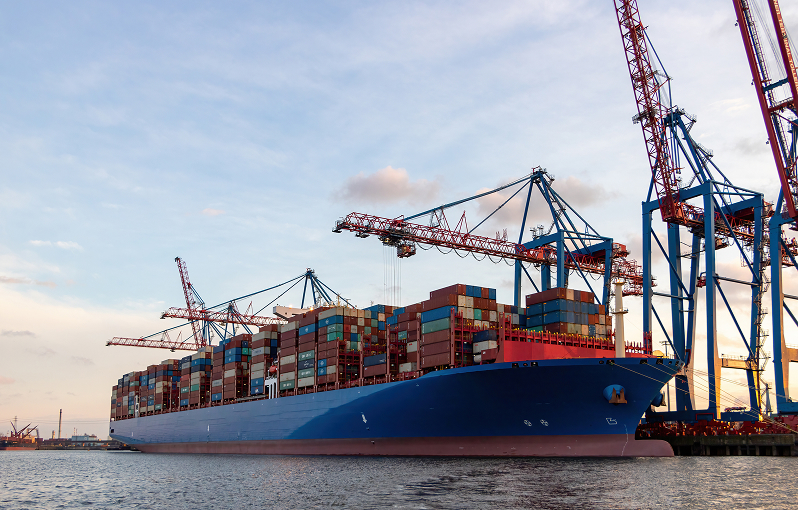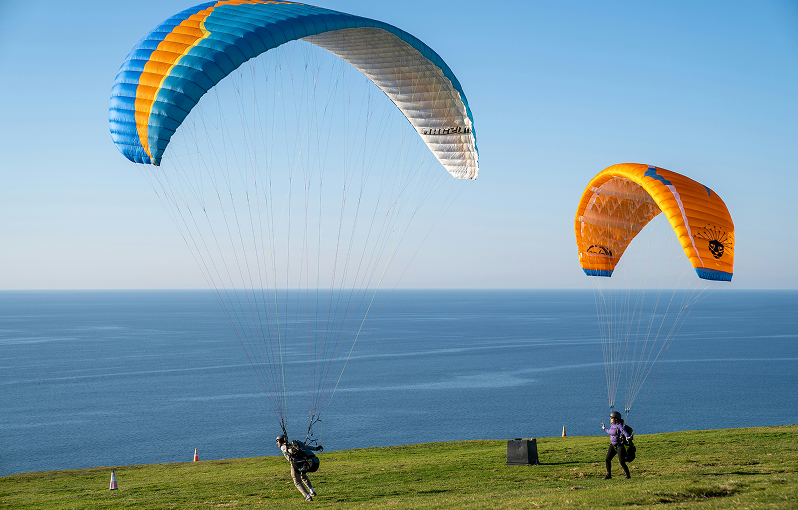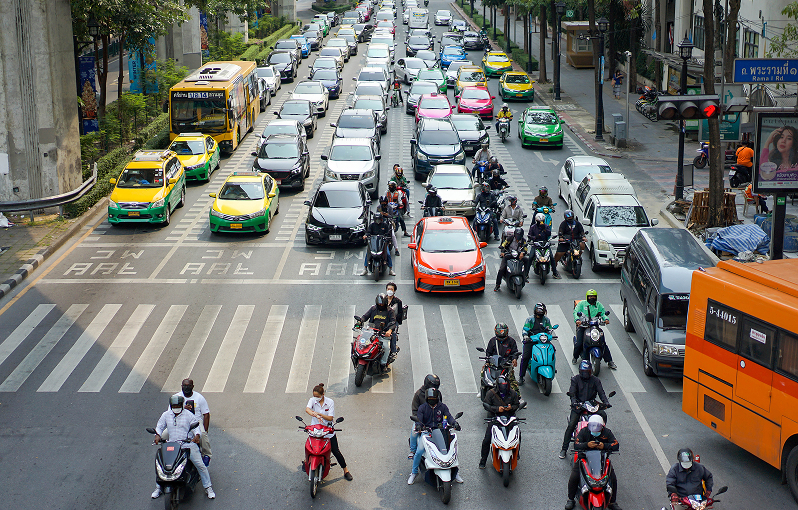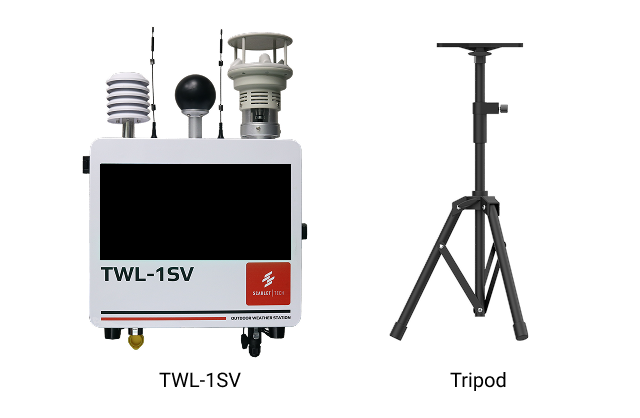
TWL-1SV Online Heat Stress Weather Station
Smart Heat Detector for Harsh Environments
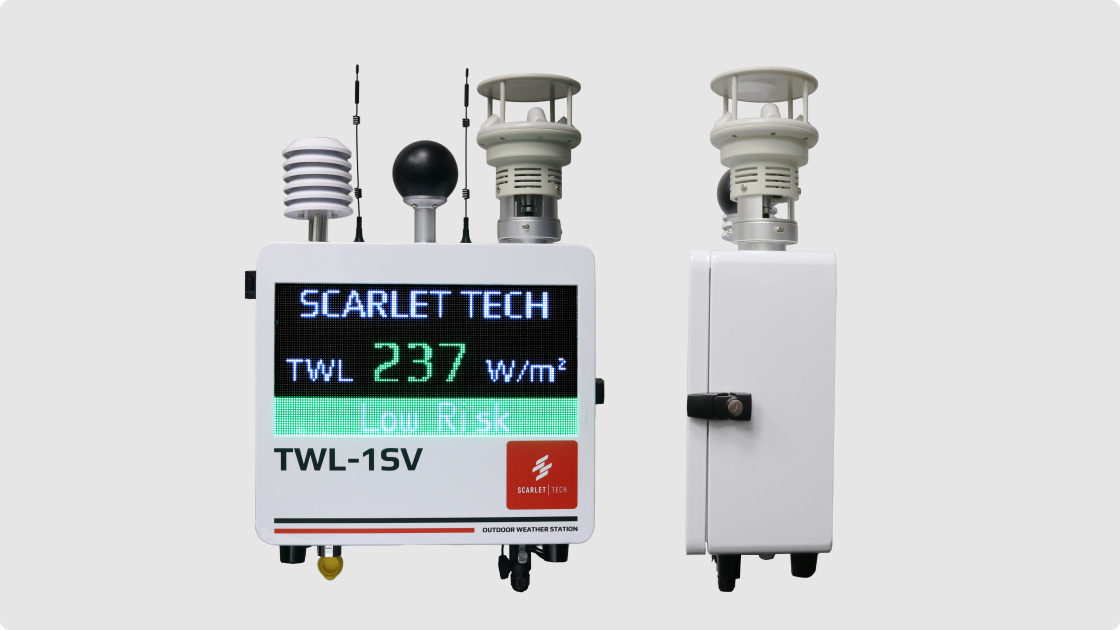
- 1
- 2
- 3
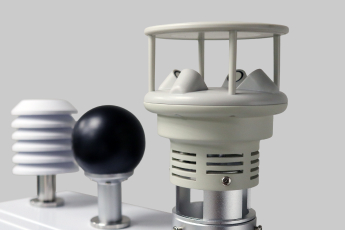
Ultrasonic Wind Sensor
Monitors ambient temperature, air moisture levels, and accurately assessing wind speed and direction, even under low-wind conditions.
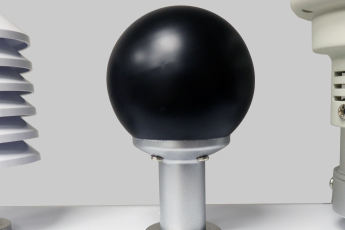
Globe Temperature Sensor
Measures accurate radiant heat temperature of the environment.
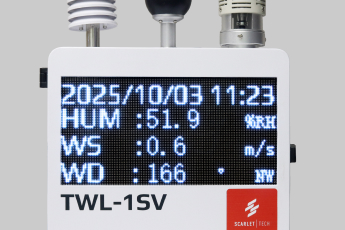
Digital Signage
Displays heat stress indices and visually informs workers of heat alerts through the built-in LED display.
Cloud-Based Heat Monitoring
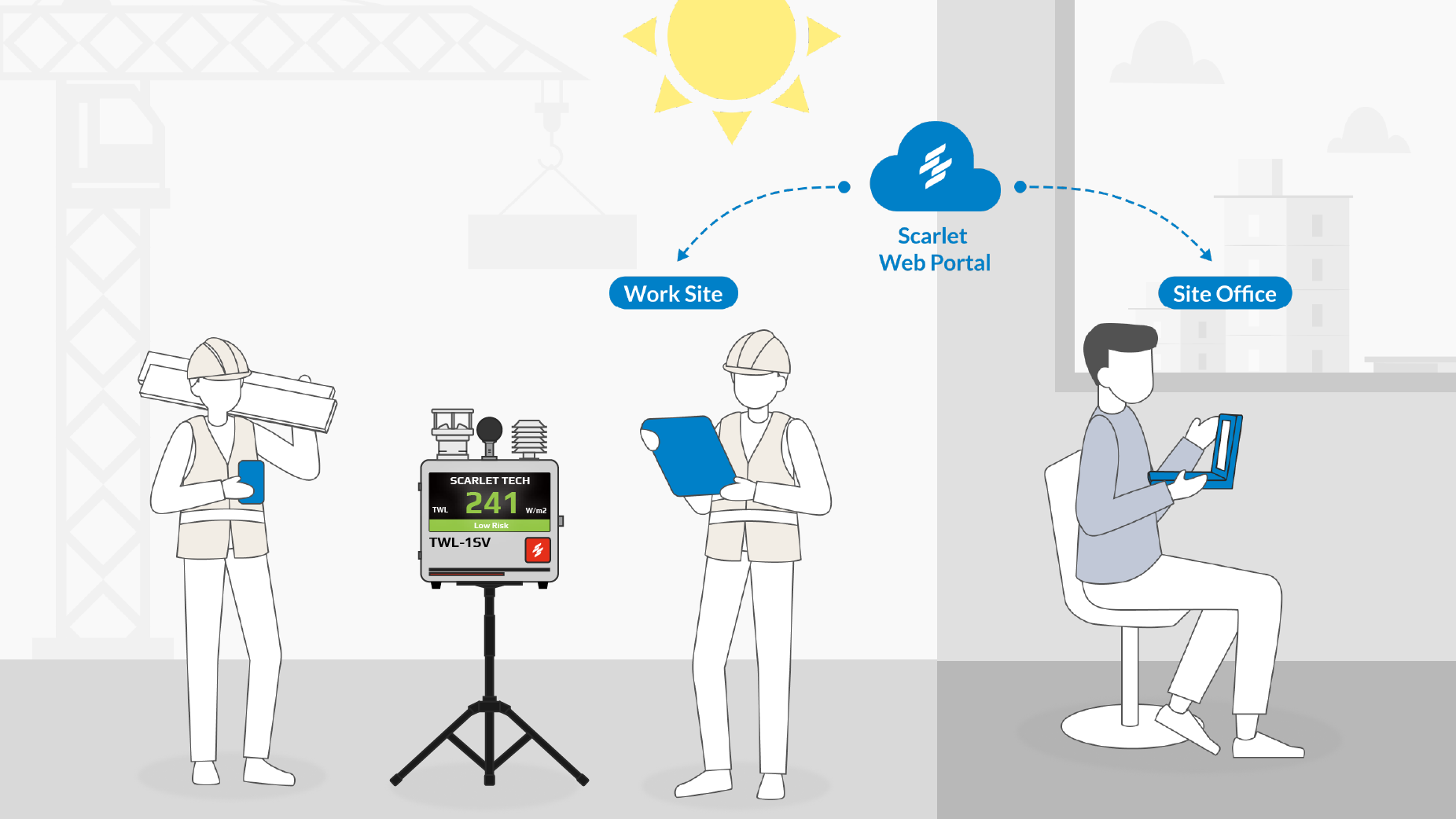
TWL-1SV supports heat stress monitoring directly with live data and alerts displayed on its built-in screen at the worksite. For broader access, data can also be reviewed online through the Scarlet web portal at the site office.
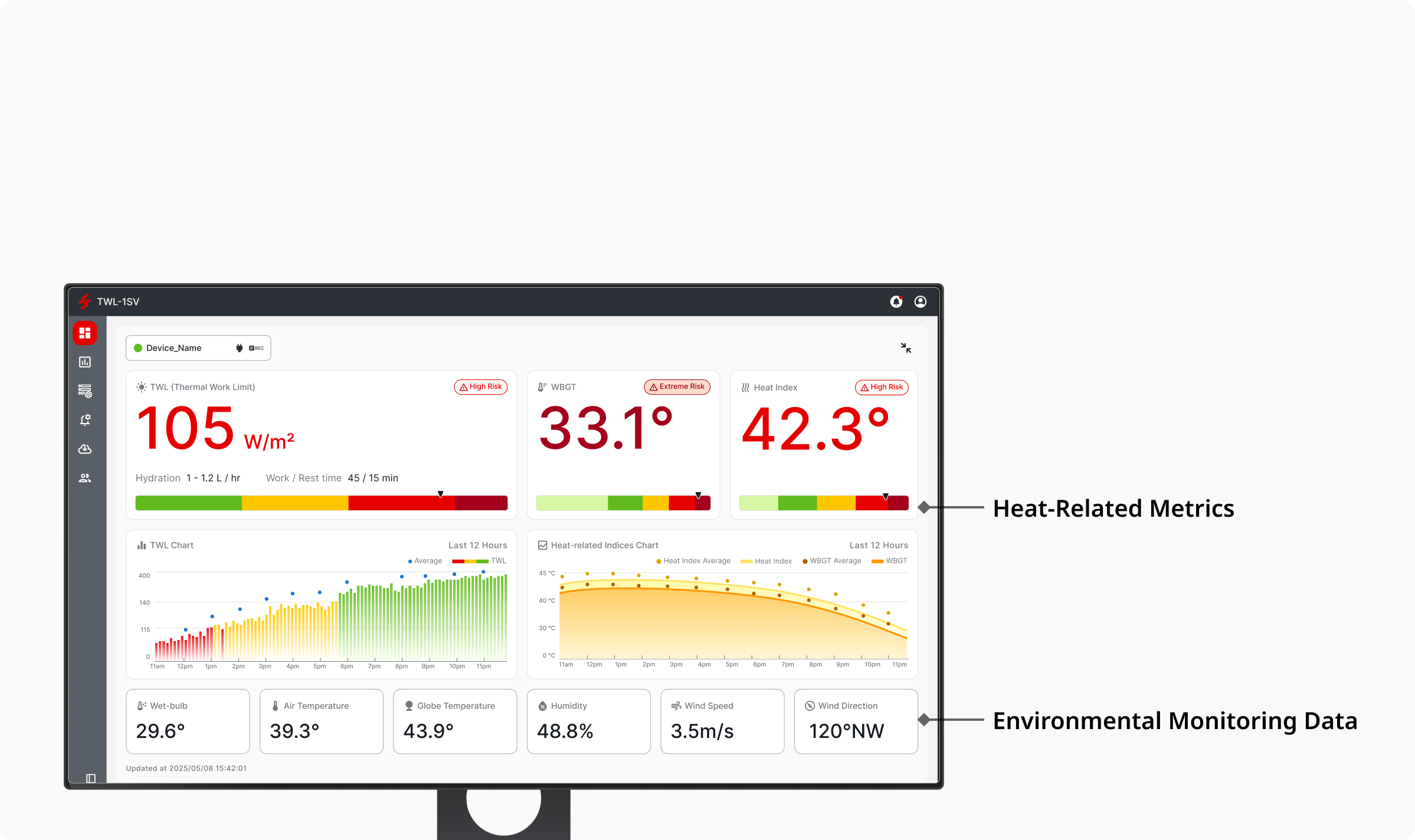
The web portal displays real-time data, heat stress alerts, and historical charts, all in one organized interface. This helps teams make faster, more informed decisions from any location.
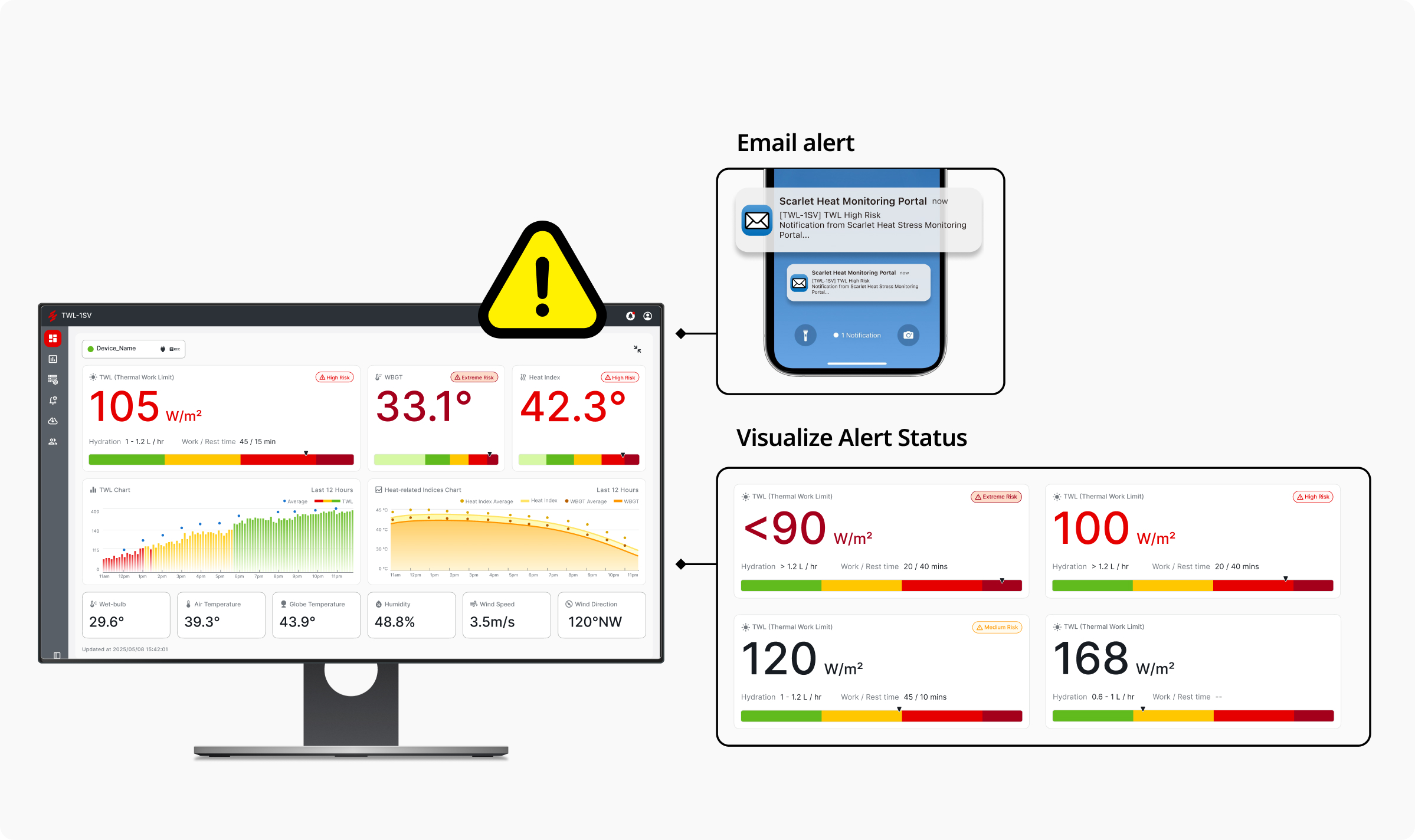
You can configure the TWL-1SV to send automatic heat alerts via email. This enables immediate action and better on-site safety during high-risk conditions.
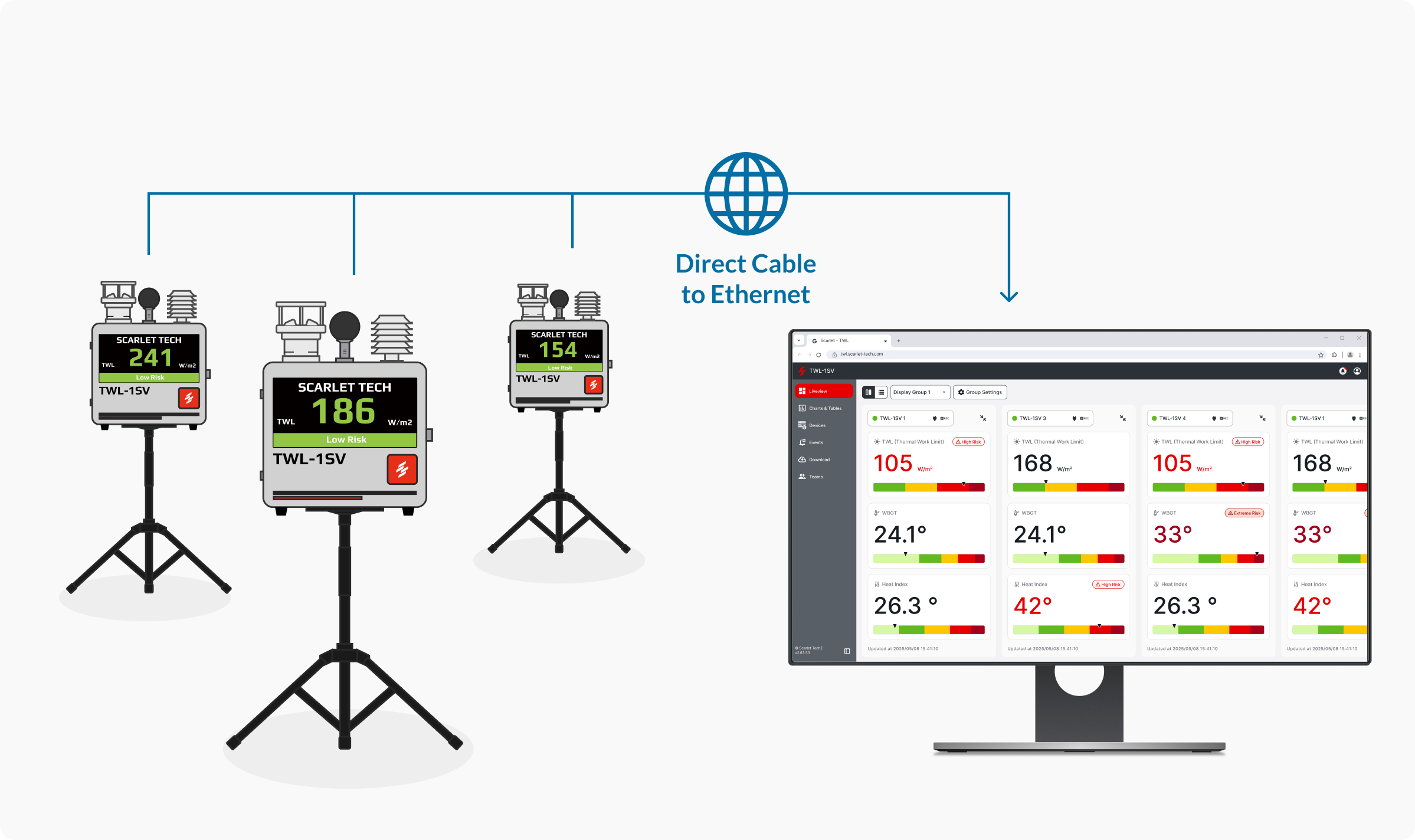
The web portal capables of connecting to multiple TWL‑1SV units located at different sites, enabling centralized viewing of environmental and heat stress data from a single interface. This helps teams monitor, compare, and respond efficiently across all locations.
Interested in This Solution? Get a Quote Now!
Access Web Portal – Free Demo
You can explore the Scarlet Heat Monitoring Portal for free by visiting the demo site.
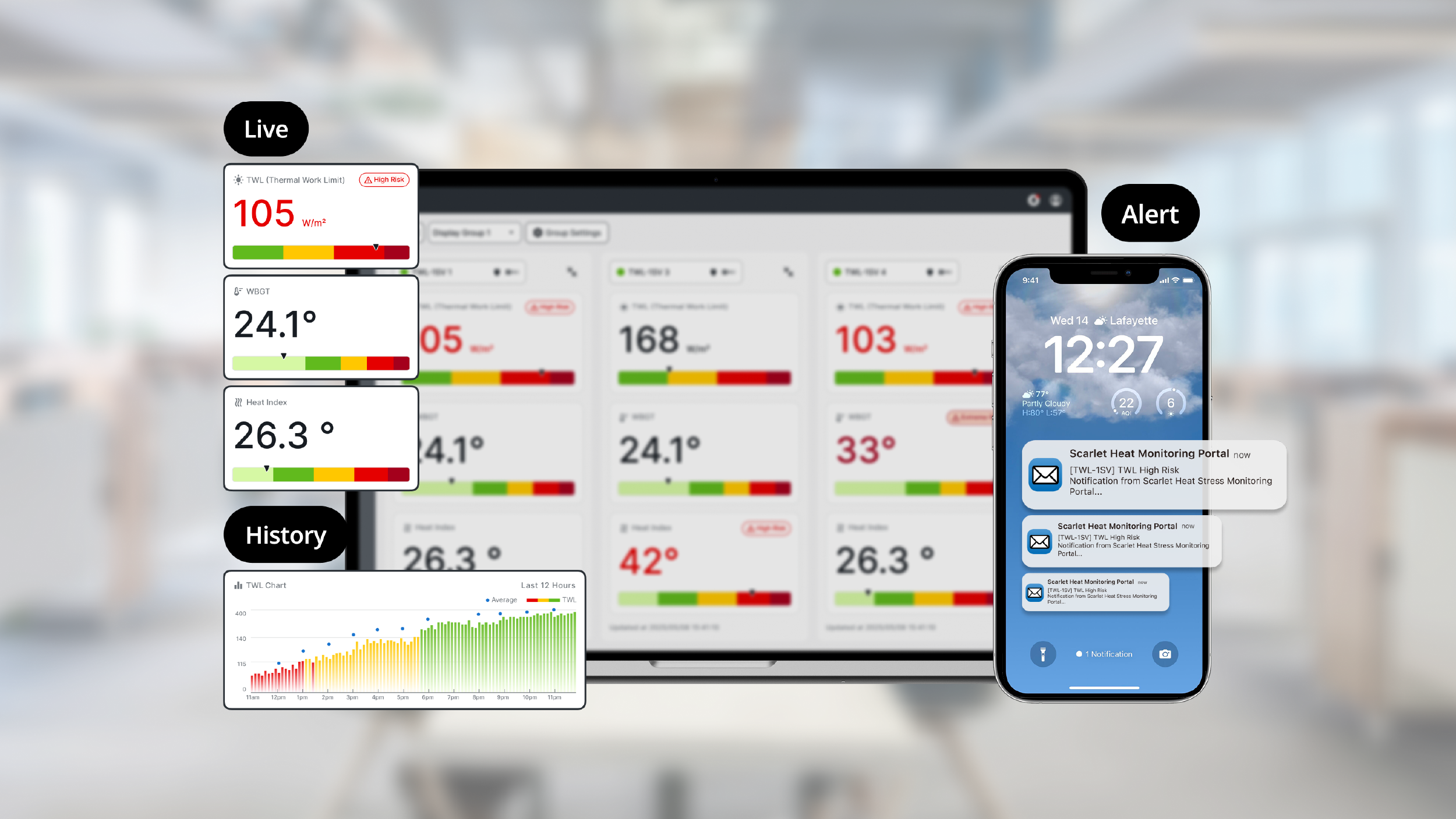
Instant Heat Stress Alerts
TWL-1SV identifies heat risk levels using three color codes: red for high risk, yellow for moderate, and green for low. These alerts are sent to users via email or browser notifications, enabling to respond promptly even when attending other tasks.
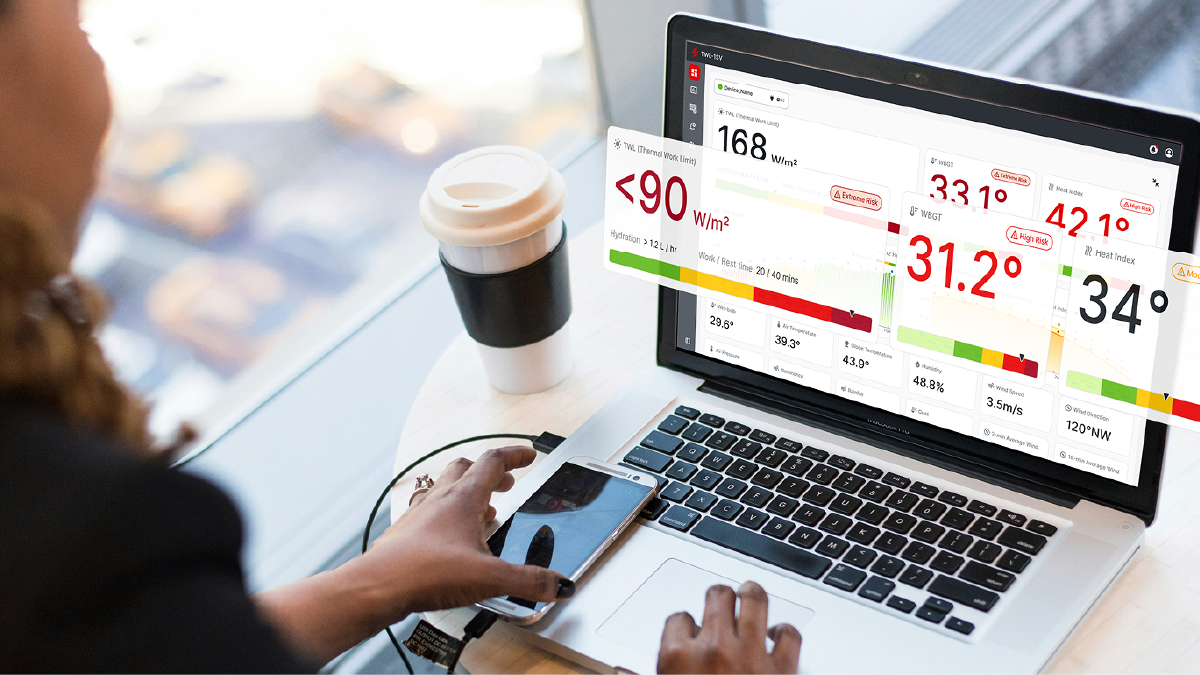
TWL – A Better Heat Index for Worksite Safety
Thermal Work Limit (TWL) is a comprehensive heat index that evaluates environmental and physiological factors. It measures dry-bulb and wet-bulb temperatures, wind speed, and radiant heat, while also accounting for the type of clothing worn and the acclimatization level of workers.
This algorithm makes TWL a feasible index to better reflect actual worksite heat stress. TWL categorizes risk into high (TWL 140), helping determine safe work intensity. It also provides clear rest and hydration guidance to support informed decision-making and better heat safety practices.
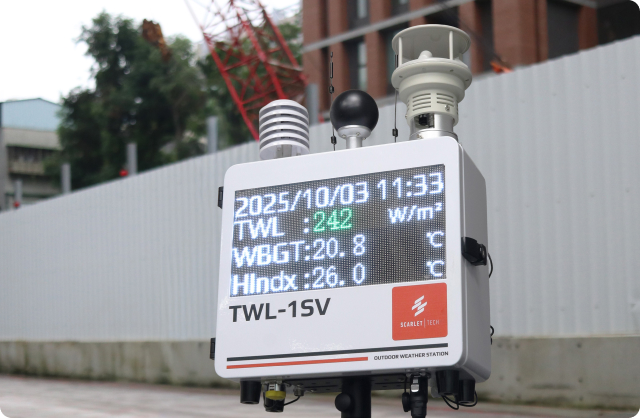
Integrate Seamlessly with Your Existing Systems
Users can easily transmit TWL-1SV data via RS485/Modbus to your control systems for further analysis and improve operational workflows.
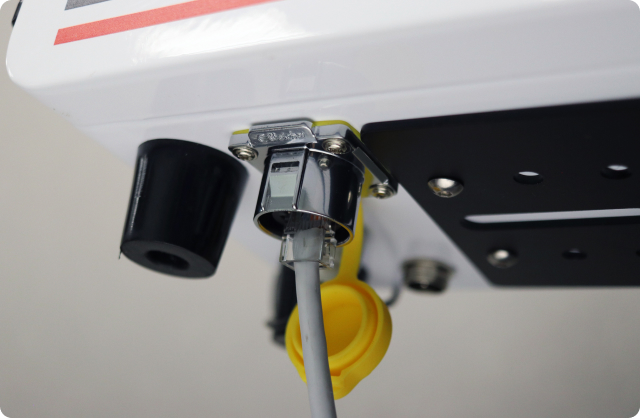
Frequently Asked Questions
What is TWL?
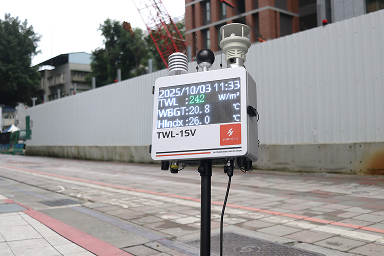
Where should the TWL-1SV be installed?
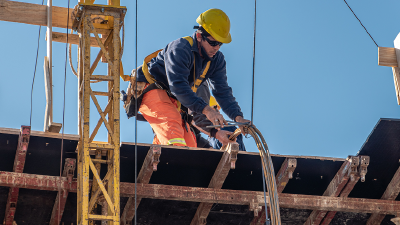
How many TWL-1SV devices can be connected to the web portal?
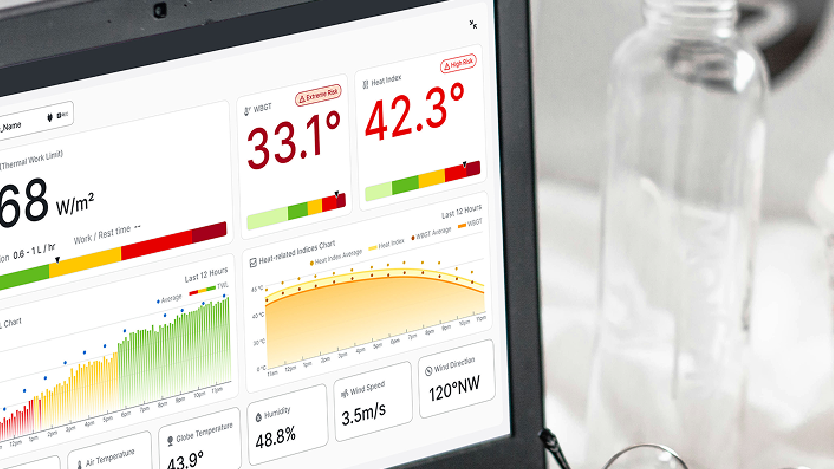
Add-Ons
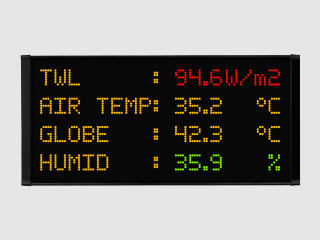
Signage
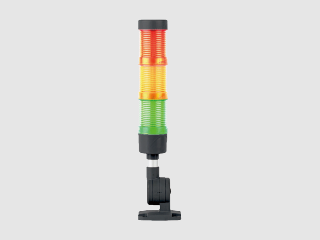
Warning Devices
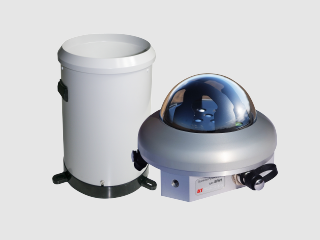
More weather sensors available
Specifications
- Performance
- Device
- Features
- Package List
- FAQ
- Download

| Item | Description |
|---|---|
| TWL calculation | Based on Tw, Tg, Ta and WS |
| WBGT calculation | 0.7 x Tw + 0.2 x Tg + 0.1 x Ta |
| Heat index (HI) | 21 to 45 °C |
| Globe thermometer (Tg) | Range: 0 to 80 °C / Accuracy: ±1.5 °C (15 to 40 °C); ±2.0 °C (others) |
| Dry-bulb temperature (Ta) | Range: -20 to 90 °C / Accuracy: ±1.5 °C |
| Wet-bulb temperature (Tw) calculation | 0 to 66 °C |
| Humidity | Range: 0 to 100 % RH / Accuracy: ±2% |
| Wind speed (WS) | Range: 0 to 40 m/s / Accuracy: ±5% |
| Item | Description |
|---|---|
| Measurement | Thermal Work Limit (TWL), Wet Bulb Globe Temperature (WBGT), Heat Index (HI), globe temperature, dry bulb temperature, wet bulb temperature, humidity, wind speed, wind direction |
| Power supply / consumption | 100 to 240 Vac power adapter |
| Memory | Build-in SD card (Backup storage for cloud connection lost) |
| Material casing | Aluminum |
| Features |
|---|
| ▪ Measure TWL, WBGT, Heat Index |
| ▪ Live LED signage for instant monitoring & alert |
| ▪ Remote real-time monitoring via the internet |
| ▪ Get instant heat stress alerts via web or email |
| ▪ Historical data backup on device and web portal cloud |
| ▪ Ensure OSHA compliance for heat safety |
| Package List |
|---|
| ▪ TWL-1SV weather station |
| ▪ Tripod |
| ▪ User guide |
-
TWL stands for Thermal Work Limit, an advanced heat stress index widely recognized for its effectiveness in workplace safety. It has been one of the key measure in heat stress programs at Abu Dhabi.
-
Because factors like humidity and sun exposure significantly affect how hot your body actually feels. A heat stress meter accounts for all of these, providing a more accurate assessment of environmental heat risk
-
Yes, the TWL-1SV provides visual heat level alerts directly on the device, and it also supports email notifications through the web portal’s online monitoring settings.
-
The TWL‑1SV transmits all data to the cloud for remote monitoring on Scarlet’s web portal. It connects to the internet via an RJ45 LAN port. TWL-1SV can also be integrated with PCs or existing systems using a serial port through MODBUS/RS485 communication protocols. This dual connectivity makes it flexible for both online access and local system integration.
-
There is no limit. You can connect as many TWL-1SV devices as needed for remote monitoring.
-
Since TWL mimics the working environment’s impact on laborers, TWL-1SV unit should be placed where most workers are located. For example, if the worksite lacks shade, TWL-1SV should be in direct sunlight to reflect actual conditions.
When beginning measurement, let the TWL-1SV stabilize for at least 10 minutes before checking the TWL levels for more precise readings and to allow the device to fully adapt to the surrounding conditions.
-
TWL-1SV Online Heat Stress Weather Station – Product Introduction & Datasheet2025.09.116.62 MB
Our Clients
Portable Heat Stress Meter – TWL-1S
TWL-1S is a portable heat stress meter designed to measure WBGT and TWL heat indices on-site. This compact device provides you with instructions for work, rest, and hydration plans. The user-friendly interface is shown in tri-colors backlight with information to alert HSE managers if the environment is safe for workers to work.
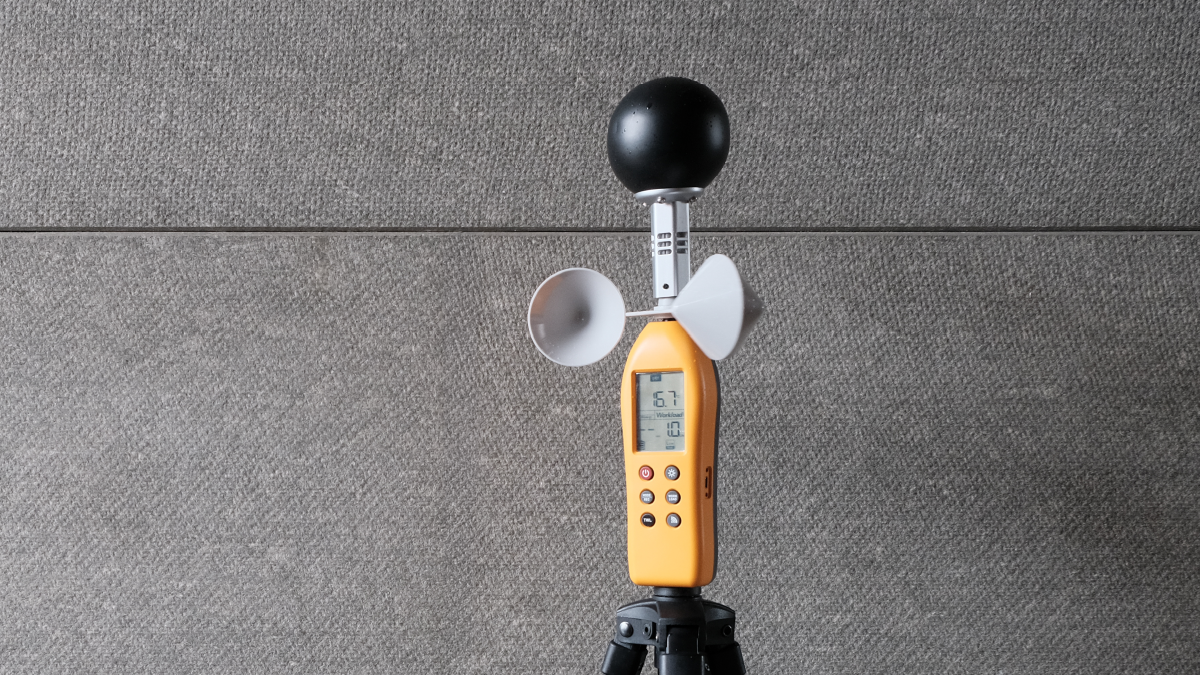
Industries
Get a Quote Today!
Thank you for the interest in TWL-1SV. Please fill out the form below. We will get back to you in few hours.


























